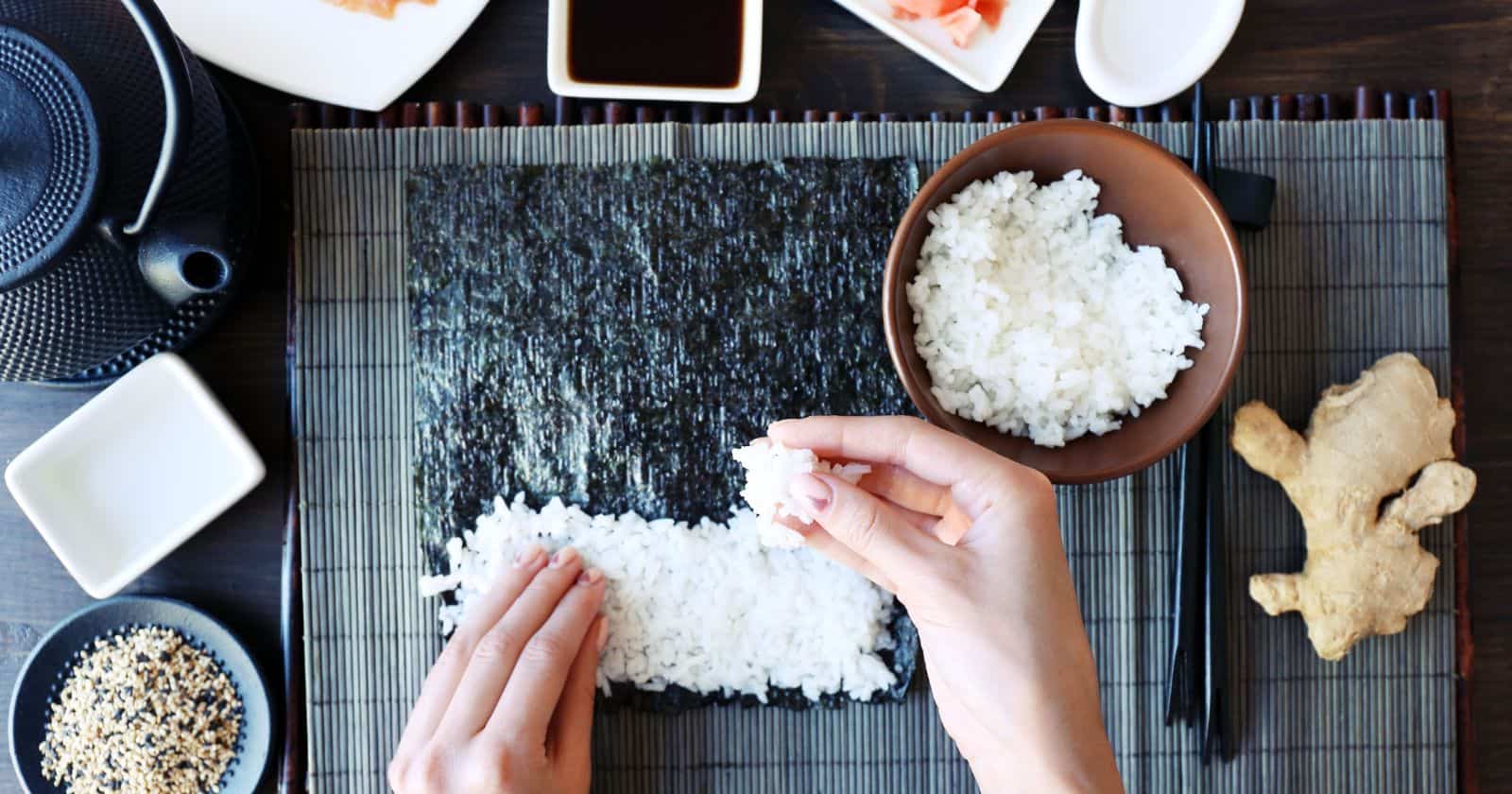Should sushi rice be cold? Proper sushi rice preparation calls for cooling the rice to room temperature before assembling sushi.
Greetings sushi chefs! If you’ve cooked up a batch of rice and wondered whether to use it hot or chilled for sushi, you’ve come to the right spot. As an avid sushi maker, I’m ready to provide the scoop on the ideal rice temperature for crafting perfect sushi every time.
While warm, steaming rice seems appealing, expert guidance reveals otherwise:
- For harmony with cool sushi fillings, rice should match room temperature.
- Warm rice causes condensation, discoloration and stickiness issues.
- Cooling requires alternating folding and fanning of rice to rapidly chill it.
- The ideal is lowering rice to between 30-40°C (86-104°F) before using.
- As long as rice cools to 60°C (140°F) or less, sushi can be formed.
So resist the urge to rush warm rice into sushi rolling! Proper cooling delivers the right consistency and prevents undesirable side effects.
Ready to become a sushi rice cooling master? Let’s dive into the ideal timing, techniques and temperature-taking tricks to perfectly chill your rice for sushi success!
Warm Rice Disrupts Sushi Harmony
One of the keys to sublime sushi is harmony – the rice, fish and fillings must complement each other. This balance is thrown off when rice temperature doesn’t match the other ingredients.
Most sushi toppings are served at cool room temperature, around 20°C (68°F). Using hot or warm rice around 50°C (122°F) creates a jarring contrast. The heat overpowers the delicate flavors and textures.
For the perfect synergy of taste and texture, sushi rice should be cooled to a similar room temperature as the other ingredients, in the 20-25°C (68-77°F) zone. This enables all components to be enjoyed together smoothly.
Warmth Causes Undesirable Rice Texture
Another reason to cool sushi rice lies in the changes warmth creates in rice texture and consistency:
- Warm rice is softer and stickier, with a mushy glue-like texture that clumps together. This makes it hard to handle and shape.
- Cooler rice is firmer, with a pleasant chewy bite that stands up to shaping and cutting.
- Moisture condenses on warm rice, causing surface stickiness and sogginess that inhibits clean slicing.
- Cooled rice has a dryer surface that allows for clean, smooth slicing and shaping.
For the ideal mildly chewy yet tender mouthfeel, sushi rice must rest from steamy temperatures down to room temperature before use.
Temperature Control Avoids Discoloration
Letting just-cooked rice cool also prevents unappealing changes in the rice’s color and appearance:
- Excess warmth causes starches to break down, turning white sushi rice into an undesirable yellow tinge.
- Keeping cooked rice over 60°C (140°F) accelerates this yellowing process.
- Letting rice cool slower avoids this temperature range that activates starches and enzymes leading to yellow discoloration.
- A more gradual descent to room temperature results in freshly white rice color.
So for visual appeal in addition to taste and texture, it’s vital to let sushi rice lose heat before molding sushi.
Proper Cooling Methods
To reap the benefits of room temperature rice, it’s important to cool rice using proper technique:
- Spread freshly cooked rice evenly in a wide shallow container to maximize surface area for quick cooling.
- Gently fold and turn sections of rice frequently using a spatula to evenly distribute heat.
- Fan sections of rice to speed evaporation of surface moisture. Use a paper fan or blow with mouth.
- Avoid refrigerating rice as this dries it out. Leave on the counter to gradually cool.
- Check temperature periodically with a thermometer and stop around 30°C (86°F).
With the right cooling methods, sushi rice can safely decrease from a piping 80°C (176°F) to an ideal 30°C (86°F) in about 30 minutes.
When Rice is Cool Enough for Sushi
Is there a perfect temperature range sushi rice should reach before it’s deemed ready for sushi making? Experts recommend:
- Ideally, rice should cool to 30-40°C (86-104°F) for best flavor, texture and appearance. This room temperature range harmonizes perfectly with other sushi fillings.
- At a minimum, rice should drop below 60°C (140°F) before molding to avoid stickiness and accelerated discoloration.
- Any temperature between 40-60°C (104-140°F) is warm but usable. Flavor and texture may be slightly compromised.
- Investing time in proper cooling pays off in superior sushi!
Now that you know the ideal final temperature ranges to aim for, you can chill your sushi rice like a pro.
Experiment with Temperatures
Want the full experience of how rice temperature impacts sushi? Try crafting rolls, nigiri or hand rolls using rice at various temperatures:
- Hot directly from the cooker
- Warm around 50°C (122°F)
- Room temperature about 25°C (77°F)
Taste and observe how temperature affects the flavor, texture, slicing, shape retention and visual appeal. You’ll quickly discover why sushi chefs advocate letting rice lose its initial heat before using.
Cool Properly for Sushi Success
Armed with this knowledge, you can now chill your sushi rice confidently and skillfully for the very best results. Resist the urge to rush hot rice into sushi rolling. Instead, invest a few minutes into proper cooling techniques. With rice that’s fanned, folded, turned, and cooled gradually to room temperature, you’ll be rewarded with harmonious, visually pleasing sushi that delights the senses.



